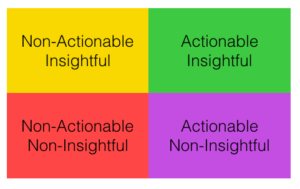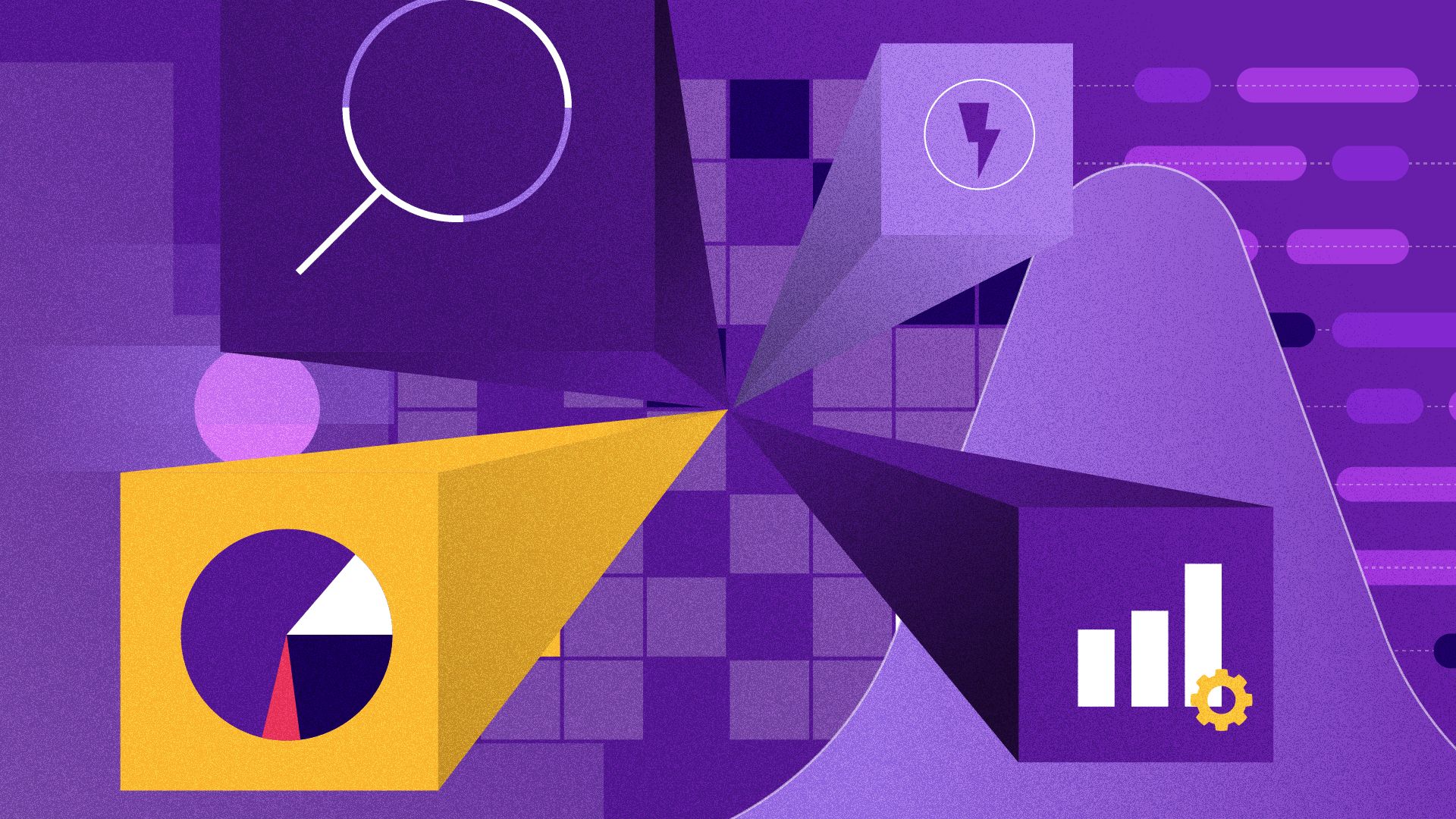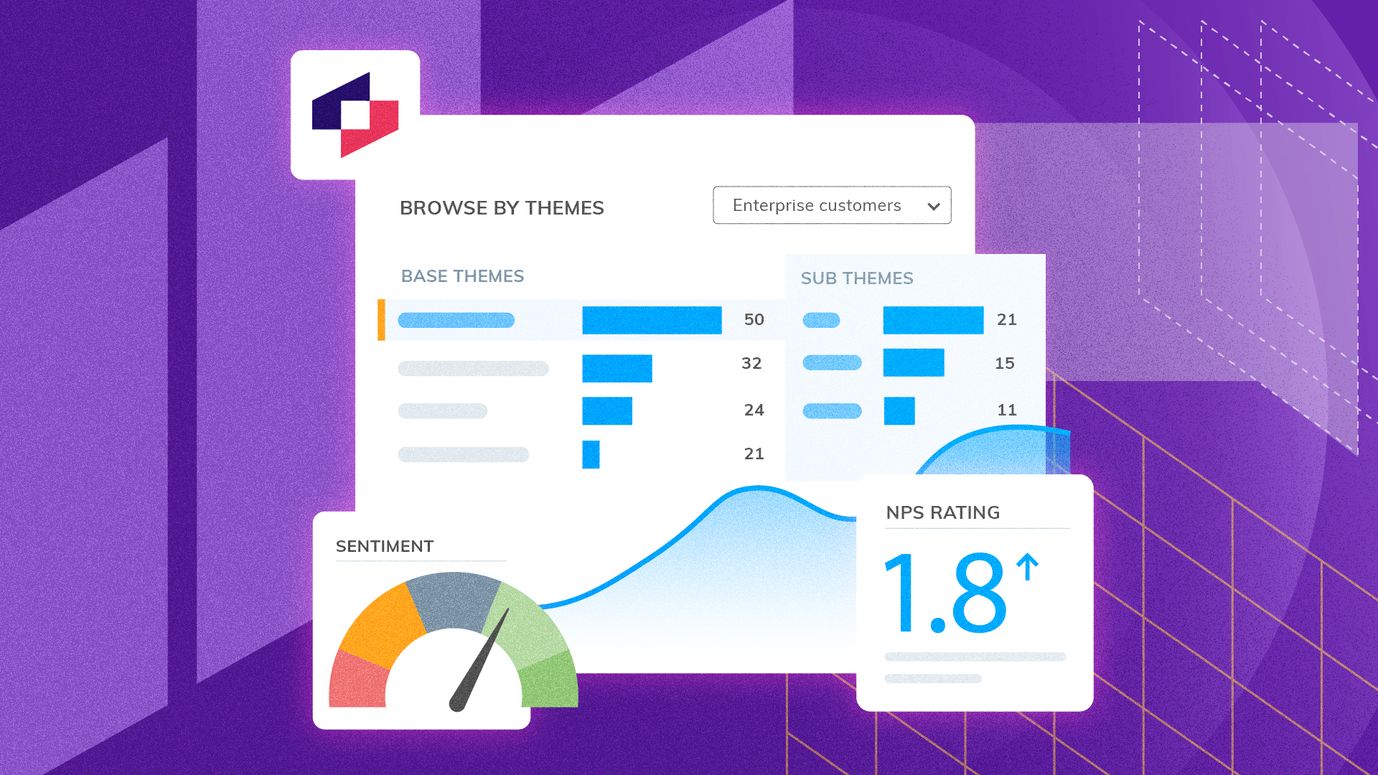Actionable insights: can data analysis software deliver them?
When it comes to making sense of data, getting actionable insights is the holy grail. But what does this even mean? When is a finding an insight? When is an insight actionable? Can data analysis deliver them? Let’s get to the bottom of this by looking at some examples.
Imagine, you have conducted a survey of 100,000 students, and you seek actionable insights for what to improve at a university.
Non-insightful vs. Insightful Knowledge
Non-insightful is everything that’s old news to you. Something that you already knew was an issue. For example, the fact that some students struggle with too many exams on at the end of the semester.
Insightful is everything that you did not know. Or, you may have had a hunch or a suspicion. Insights are findings that contradict your knowledge, confirm your suspicions or quantify the importance. For example, if the analysis reveals that 90% struggle with too many exams, this is insightful and worth re-thinking.
An insight is a finding that contradicts your knowledge, confirms or denies your suspicion, or quantifies the importance
Non-actionable vs. Actionable Insights
Non-actionable findings either lack specificity or are hard to influence. For example, students may mention poor teaching quality without naming the courses. So, you cannot take action on this. Similarly, they may complain about circumstances outside of the university’s control such as campus location or weather.
Actionable findings are those that translate into concrete actions. It could be: easy to introduce changes, long-term strategy or complex overhauls. For example, if students complain that exam dates aren’t communicated well, publishing them early and prominently is an easy fix. If students complain about too few places to study, an action would include setting aside budget and planning.
Three Types of Actionable Insights
Insight > Adaptation > Action
You will need critical thinking to turn insightful findings into actions. For example, you could solve the lack of parking on campus not by providing more parks, but by working with the city council to improve public transport options. Or, to give a positive example, if students say that they love the environment and the campus, the action could be to use this finding in the marketing material to attract students who care about this.
Insight > No Action Required
Not everything is worth measuring, but data analysis can validate one’s assumptions. The analysis can lead to insights that aren’t necessary actionable but are just as vital. For example, you may think that class size is an issue, but if students don’t mention it, no action to fix it is needed.
Insight > Rethink strategy
Data analysis can also help validate if a strategy implementation is working or not. Let’s assume: last quarter students complained that university staff weren’t helpful. After taking measures to change that, this quarter’s results should demonstrate if the measures worked or need further thought.
The TARS robot from the Interstellar can deliver actionable insights
Can today’s software find actionable insights in data?
In my opinion, despite all the promises, none of the today’s solutions can ingest data and spit out actionable insights. Why? Because separating Actionable and Insightful findings from those in the other three quadrants would require two types of knowledge:
b) objective knowledge of difficulties associated with different actions,
a) subjective knowledge of what’s old news and what’s genuinely insightful.
Eventually, AI agents may be able to learn the objective knowledge by reading materials published by people over the years. And they may even build up the subjective knowledge over time by working alongside its user. Unfortunately, we are still far from the inventions of science fiction.
What data analysis can deliver today is the ability to sift through the data more efficiently. When it comes to making sense of people’s comments, Natural Language Processing algorithms can turn people’s comments into themes that can be analysed just like numbers. Following that, when it comes to making sense of structured data, data visualisations help understand differences, uncover correlations and detect trends.
When evaluating a data analysis solution use the following questions to test it:
- Will this solution tell you things about your business that you don’t already know?
- How easily will you be able to separate signal from noise?
- Will it be able to identify trends in data without having to specify them in advance?
At Thematic, we help companies to find insights by digesting customer and user feedback into easy to use data visualisations. Get in touch if you’d like to see how.






